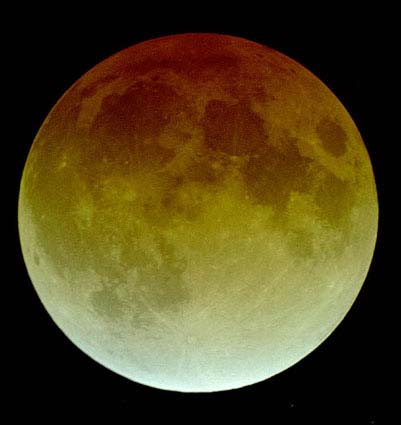On Tuesday, May 4 observers from Europe to India, including Africa, have a chance to observe a lunar eclipse. For observers who want to do "serious work" during the eclipse there is actually little to learn about the Moon, but the eclipse is a great probe of Earth's atmosphere. The color and brightness/darkness of a lunar eclipse are affected by the transparency of our atmosphere. Notoriously dark eclipses - when the Moon disappears leaving a dark hole in the starry sky - occur immediately following large volcanic eruptions that dump volcanic dust and aerosols in the atmosphere. Tuesday's eclipse shouldn't be very dark because no large eruption has occurred since 1991 (Pinatubo, Philippines). Large forest fires have also colored eclipses, but there are no huge fires now, and Amazon mega-burning doesn't begin until August. A final source of atmospheric particles that can color eclipses are meteor showers, and the Eta Aquarids (peak May 5) may have a small effect. In general, the eclipsed Moon should be bright and have a wonderful copper, rose or maybe even coral hue. Enjoy! And please send LPOD images for use on May 5!
Technical Details:
Jean-Marie Maillard of Belgium provides this image of the November 8, 2003 eclipse as a teaser for Tuesday's eclipse: he used the 10 inch f/d 6,6 Newtonian telescope of the "Société Astronomique de Liège" to obtain these pictures, on Kodak Gold 100 film (12 sec exposure).
"It was the most amazing lunar eclipse I've ever seen and the first time I made so closer images of eclipse." — Jean-Marie Maillard
Related Links:
Jean-Marie's WebsiteEclipse Details at Space.Com
Observing & Photographing Lunar Eclipses
|
Yanvar' Fevral' Mart Aprel' Mai Iyun' Iyul' Avgust Sentyabr' Oktyabr' Noyabr' Dekabr' |
|
Publikacii s klyuchevymi slovami:
Moon - Luna - Lunar Photo of the Day - LPOD
Publikacii so slovami: Moon - Luna - Lunar Photo of the Day - LPOD | |
Sm. takzhe:
Vse publikacii na tu zhe temu >> | |
